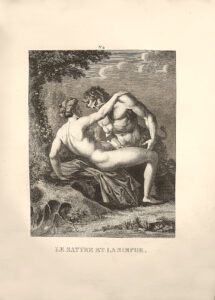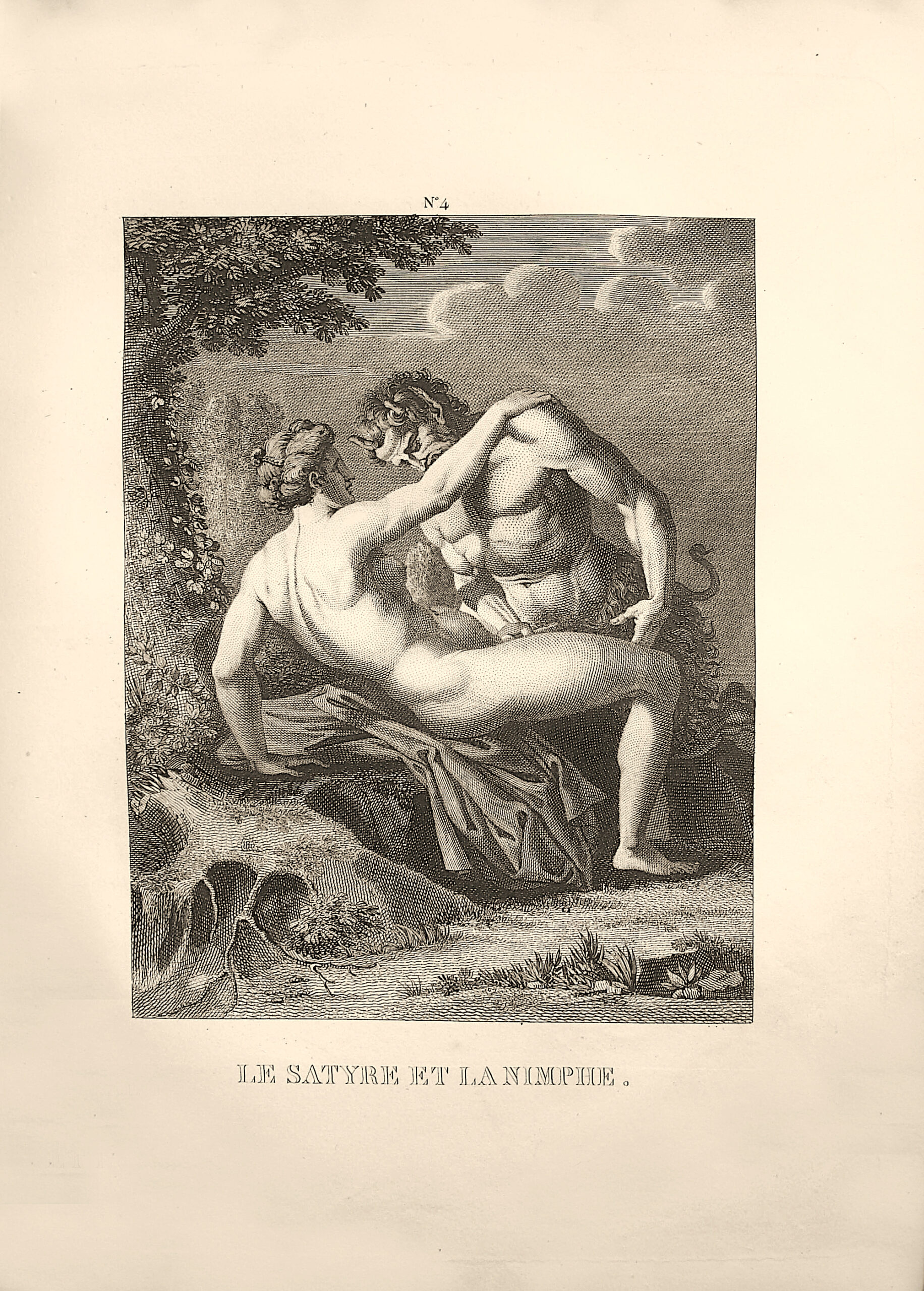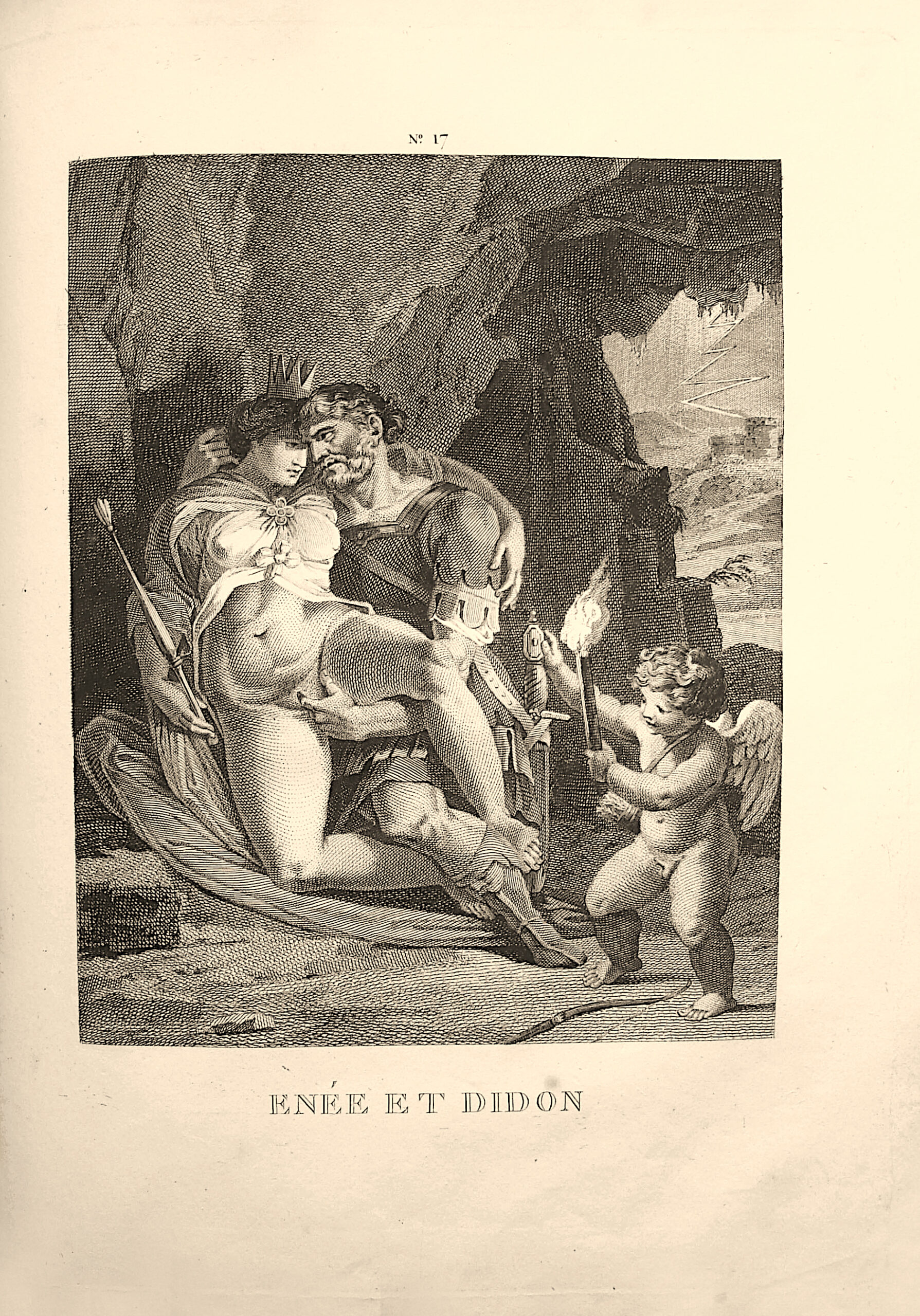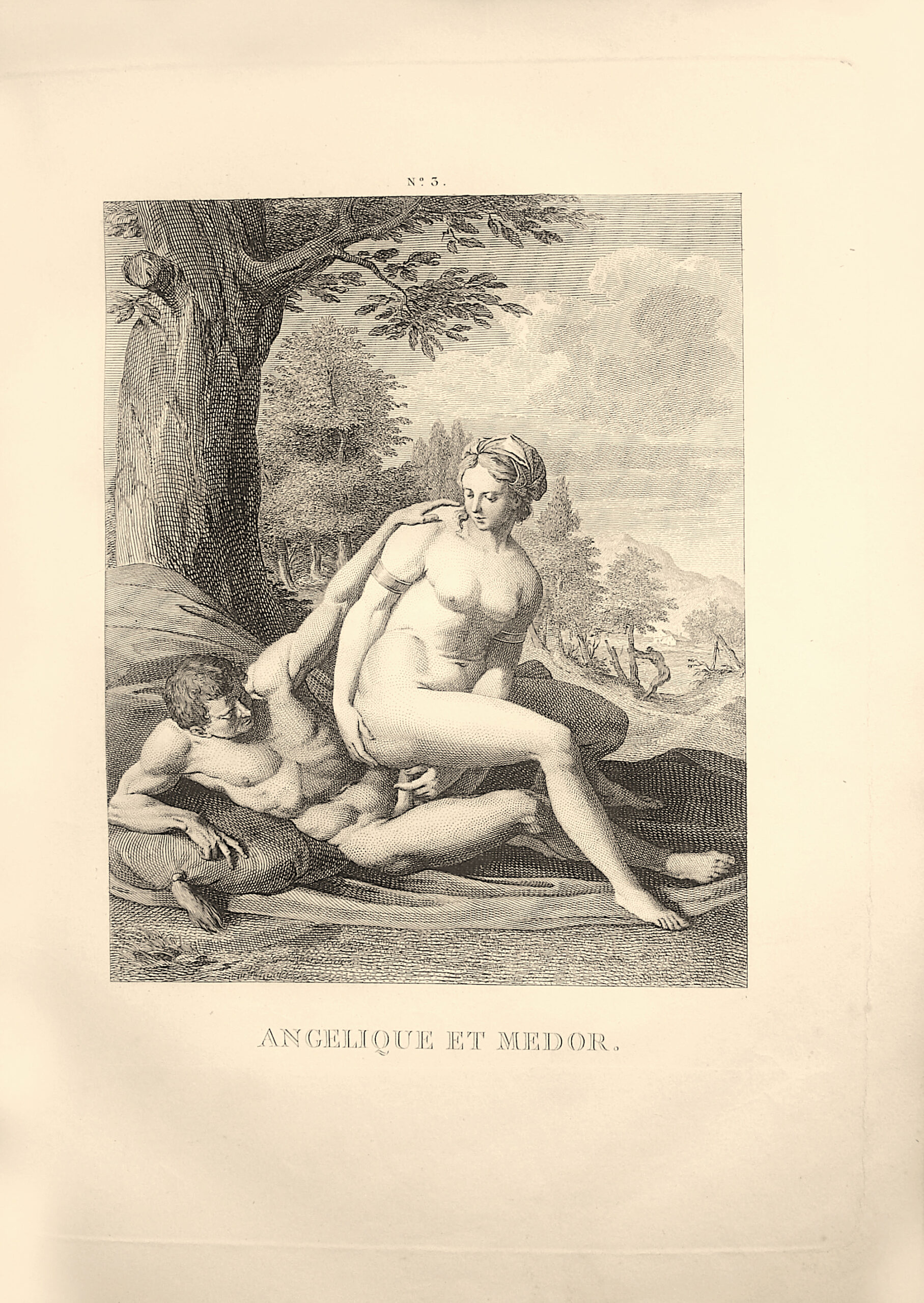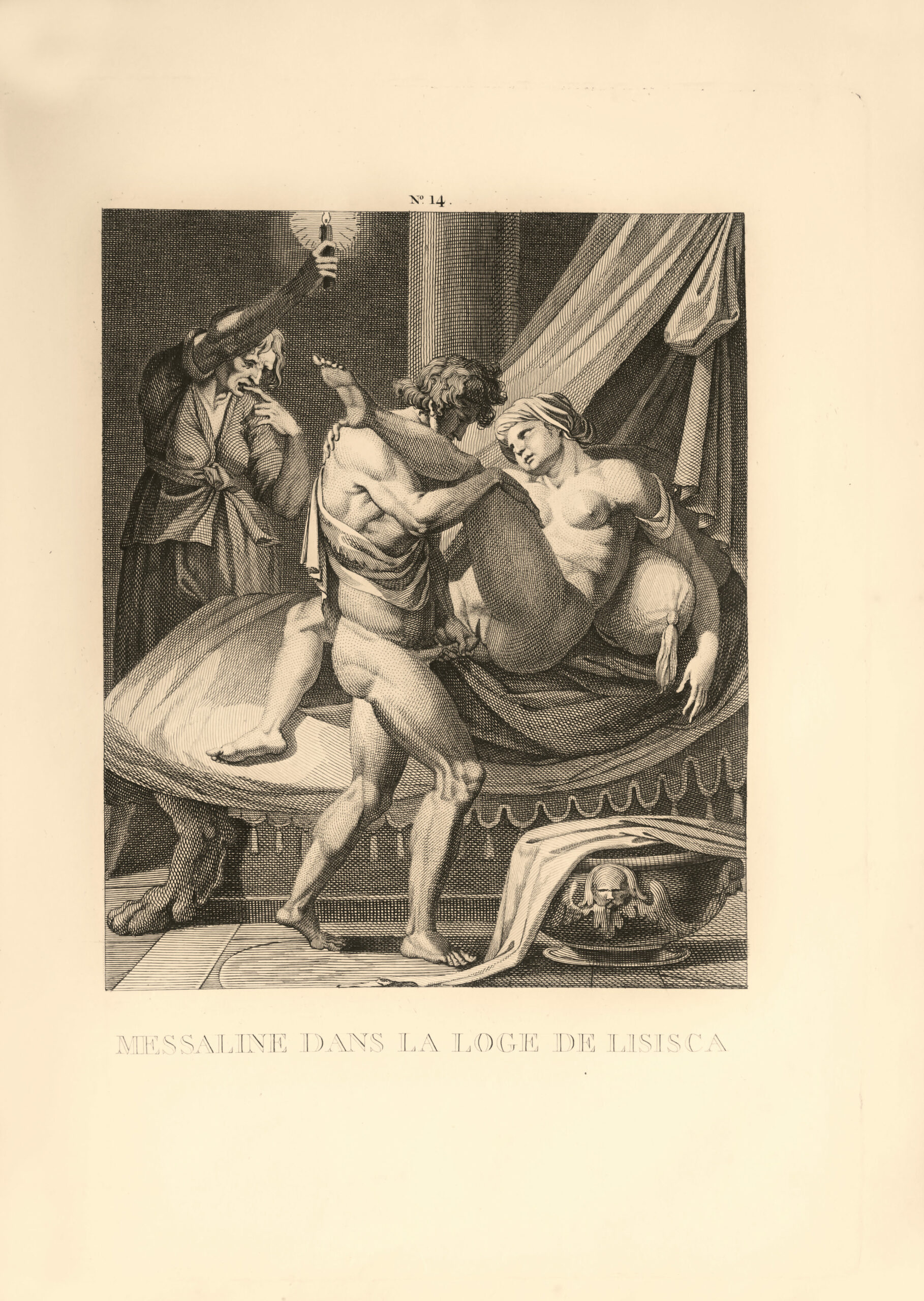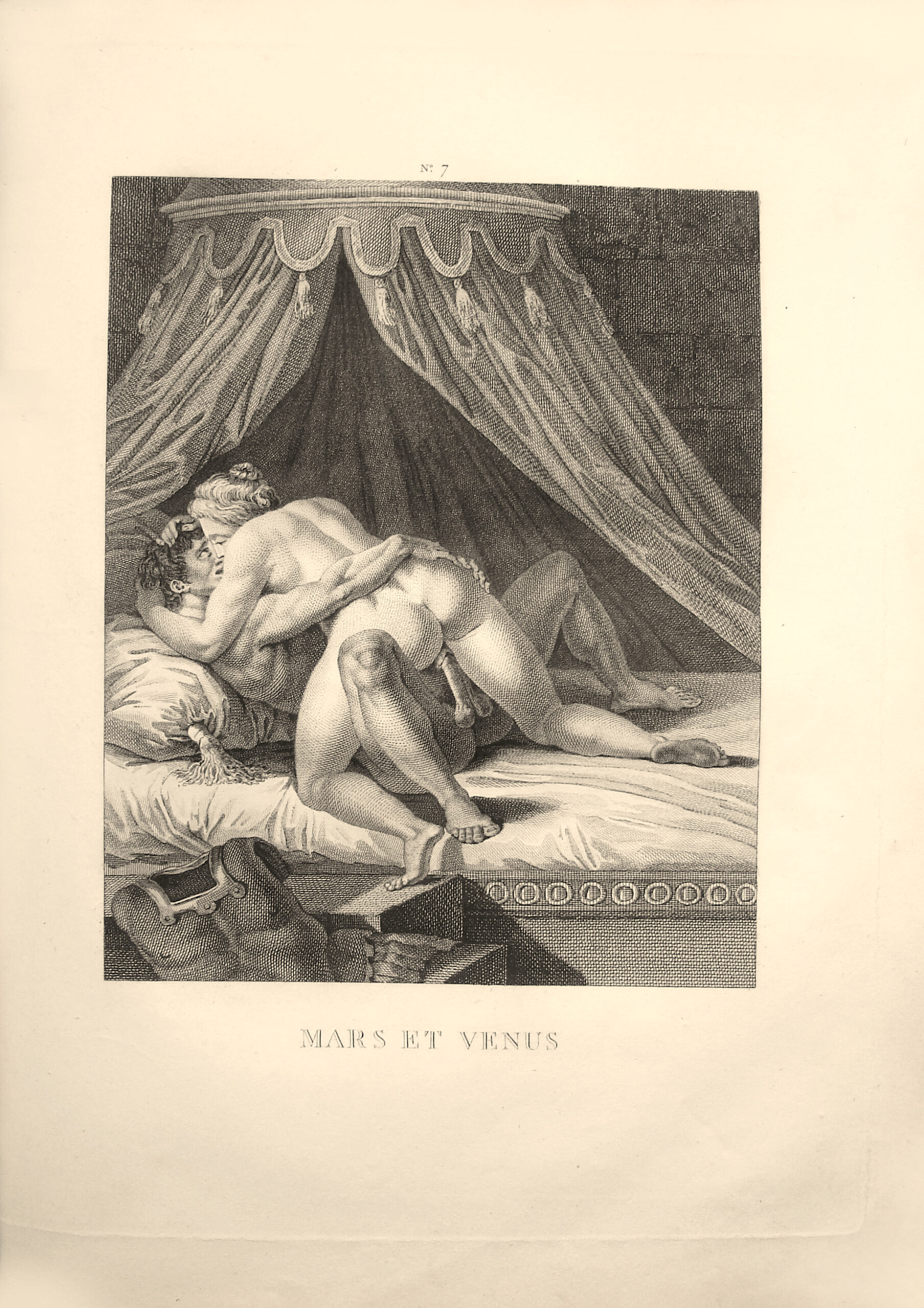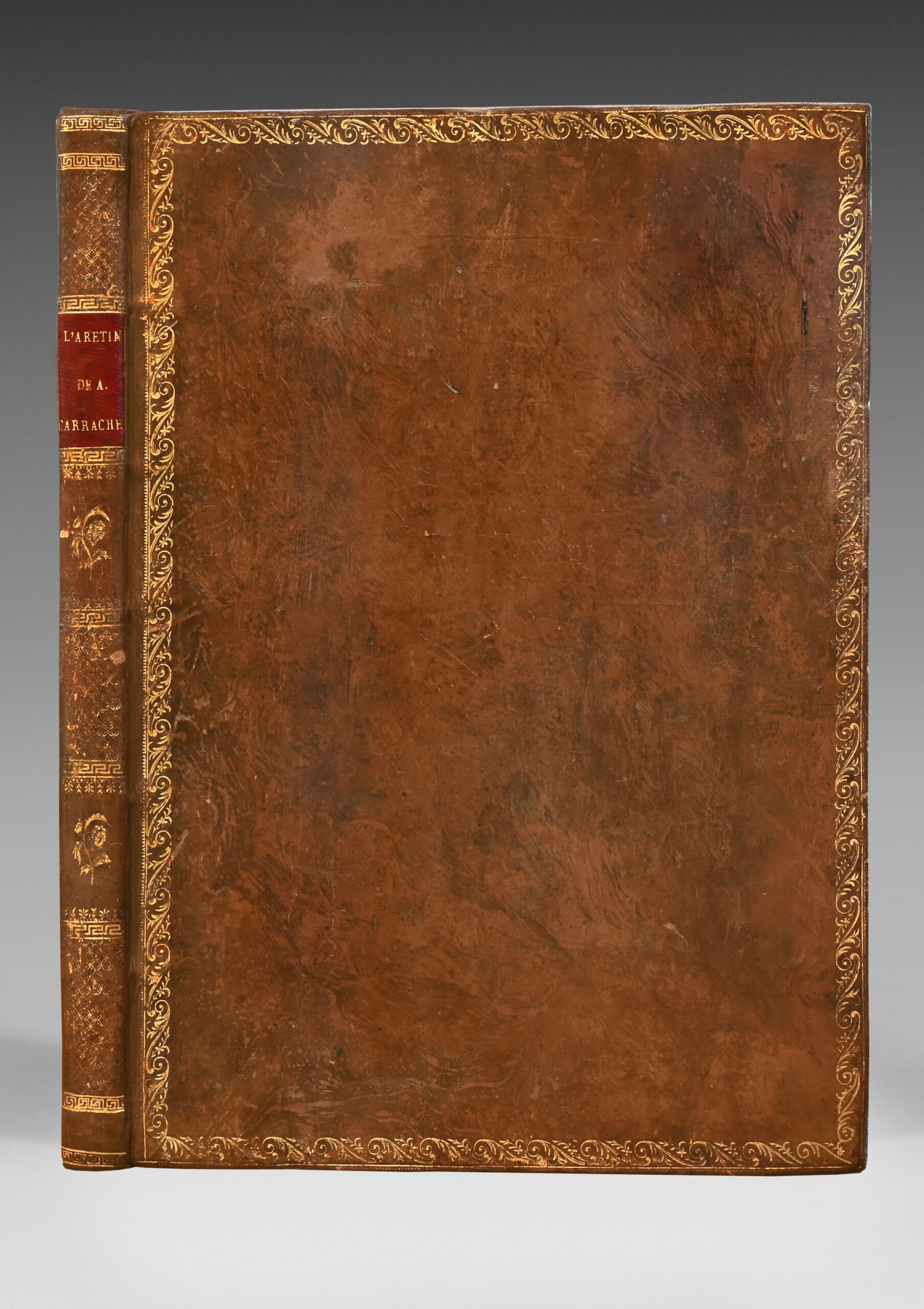A la Nouvelle Cythère [Paris, Didot, 1798].
Large 4to with 1 leaf for the half-title (bound at the time without the title-page), 10 pp. of foreword, (1) l. of table and errata, 80 pp. and 20 full-page numbered engravings protected by silky paper, fawn-coloured marbled calf, gilt border around the covers, decorated flat spine, red morocco lettering-piece, inner border, gilt edges. Contemporary binding.
301 x 225 mm.
First and famous edition of “Aretino” by Agostino Carracci, “the most artistic of erotic books in terms of the execution of the drawings…” (Cohen, Guide de l’amateur de livres à gravures du XVIIIe siècle. Paris, 1912, col. 88).
Sander, 34; Graesse, I, p. 191.
It is illustrated with 20 engravings after Pierre de Jode executed from Agostino Carracci’s compositions engraved by Coiny on the following subjects: “Vénus génitrice. Paris and Oenone. Angélique and Médor. The Satyr and the Nymph. Julie with an athlete. Hercules and Dejanira. Mars and Venus. The cult of Priape. Antony and Cleopatra. Bacchus and Ariadne. Polyenos and Chrisis. The Satyr and his wife. Jupiter and Juno. Mescaline in Lisisca’s lodge. Achilles and Briséis. Ovid and Corine. Aeneas and Dido. Alcibiades and Glyceria. Pandora. The protruding Satyr.”
“Before telling more enthusiasts about the work we are presenting, we will give a brief account of the lives of two famous men: Aretino and A. Carracci.
Pietro Aretino, bastard son of Louis Bacci, gentleman of Arezzo, was born around 1492. He tested his poetic talent with a sonnet against indulgences. He then attacked kings, and insulted them with such brutal boldness that he was called the scourge of princes”. Aretino’s impudence towards sovereigns was beyond expression. He replied to a treasurer of the French court who had just paid him a gratuity: “Don’t be surprised if I remain silent. I have used up all my strength asking, and I have none left to give thanks. It is said that this satiric poet laughed so hard at the comical and obscene speeches that he overturned the chair on which he was sitting, and that in falling he injured his head and died on the spot in Venice, in 1556, aged 66.”
Agostino Carracci was born in Bologna in 1560 and, like his brother, he became a painter.
“The engravings of A. Carracci representing erotic postures had become so rare that many people doubted their existence.”
“It was an extraordinary circumstance that made them fall into our hands. A French officer in the Italian army, on his arrival in Venice, was fortunate enough to be able to render some services to the wife of a senator. This lady showed her gratitude in more ways than one and, among other gifts, gave him this collection, which was precious in every respect.
On his return to France, he entrusted this work to us, and with the help of several artists, we hastened to make it known to the public, who will be grateful to us for having given them this pleasure.”
“In 1798, a similar set of engravings were printed known as “L’Aretin d’Augustin Carrache”. D’après les Gravures à l’eau-forte par cet Artiste célèbre (The Aretino of Agostino Carracci, after engravings by that famous artist). lt included various sonnets by Aretino and engravings by Jacques Joseph Coiny based on drawings by Agostino Carracci. Though this edition is often thought of as another edition of I Modi, it bares little resemblance to the original. Though the engravings are very good, there are few similarities between these engravings and the 1550 woodcuts or the Waldeck version of I Modi.
One difference of note between L’Aretin d’Augstin Carrache and I Modi is that the engravings in L’Aretin d’Augustin Carrache are all based on mythological scenes whereas the I Modi engravings make no attempt to tone down the eroticism by hiding behind die historical precedent of depicting nudity through mythology (it’s not pornographic if the participants are Gods).”
“(…) The scene takes place near the La Vigne marina on the Bay of Arcachon, at the home of a young antique dealer… The mimosas have yellow eyes. She enters the store out of curiosity… The young antiquarian tells her that he has come across an exceptional collection of old books that once belonged to an old man from Bordeaux… A collection of erotic books, half of which are still in the trunk. She rummages around, leafs through them, gets ideas. The antiquarian handed her a book dating from the late 18th century: “L’Arétin d’Augustin Carrache” published “A la nouvelle Cythère”. The book contained 20 engravings, of which 19 had been ripped out, probably to be sold individually. Only the last one, entitled Satyre saillissant, and the anonymous text, heavily influenced by 18th-century erotic literature (Les postures érotiques), Crébillon Fils, Rougeret de Monbron, Diderot, Mirabeau… remain.
When she offered me this book, I immediately had the idea of tracing its history and finding the missing engravings. I discovered a complete copy in the Bibliothèque Nationale’s Enfer, accompanied by a biographical note on the author of the text, Simon-Célestin Croze-Magnan (1750-1818), literary scholar, painter and musician. At the time, I was convinced that I had shed light on this work when, three years later, I met A., who was writing an article on the Carracci brothers.
In the course of a conversation, he mentioned that Agostino Carracci (1557-1602), far less famous than his brother Annibale, was nevertheless the author of a masterpiece, Les Lascives, which he was trying to find. I then told him that I had photocopies of these engravings at home… ”
A precious volume that has always reached high prices, one of the very few preserved in its original full marbled calf binding.
From Tissot Dupont library, with morocco ex libris.
